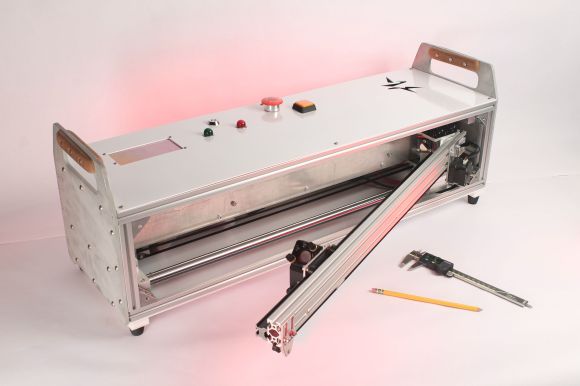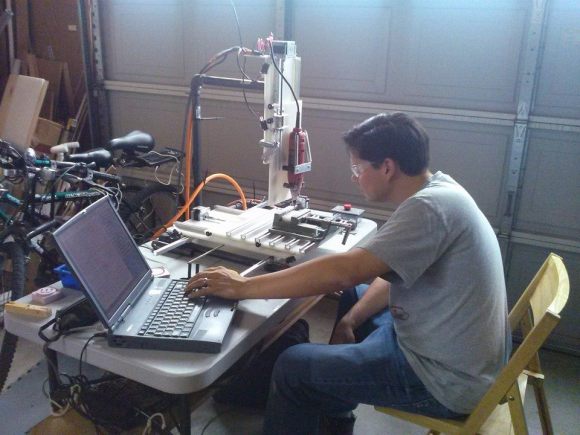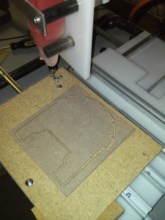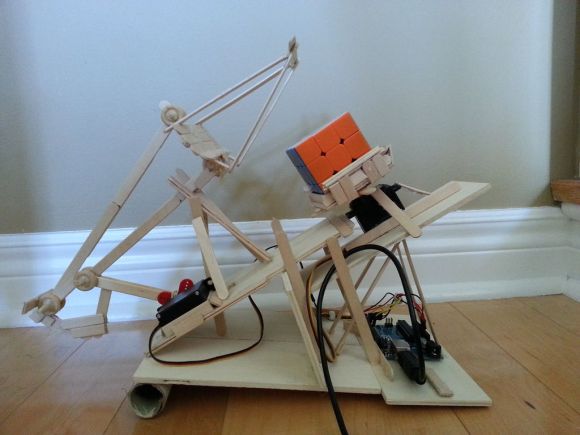Above: Astrobotic's Xombie in action
Image Credit: Astrobotic
How can you leverage mobile to increase profitability for your company? Find out at MobileBeat, VentureBeat's 7th annual event on the future of mobile, on July 8-9 in San Francisco. Register now and save $200!
Space startup Astrobotic Technology stands a golden chance of taking home the coveted Google Lunar XPrize when it begins sending robots to the moon.
That’s because Astrobotic’s autonomous Autolanding System successfully directed a suborbital rocket called the Xombie (pronounced zombie, in case you’re wondering) to perform a simulated moon landing remotely and without astronauts at the controls at a remote landing strip in the desert of Southern California.
This is a big deal as the race to privatize space continues unabated — witness the Herculean efforts of Elon Musk and ,to a lesser extent, Richard Branson — and small space companies like Astrobotic, based in Pittsburgh, are leading the charge.
While NASA supplied and paid for the rocket, it was Astrobotic chief executive John Thornton and his small team that designed the landing system and installed it on the NASA rocket. Incredibly, the Autolanding System vectored the craft to a soft landing while intuitively avoiding simulated “space” debris on the landing field in the Mojave Desert. All on its own.
“We bolted the guidance system to the rocket, it went up to 250 meters, and then simulated a lunar trajectory down to the surface, just as if it were landing on the moon,” Thornton told VentureBeat.
Astrobotic’s chief tech guru Kevin Peterson elaborated.
“Conceptually, this is like the Apollo missions where the astronauts navigated to a safe landing by looking out the window of the LEM (Lunar Excursion Module)," he said. "In this case, we have an onboard computer instead of an astronaut, and the cameras, IMU (Inertial Measurement Unit), and software are so precise that they can track the craft’s location to within a few meters.”
The test was largely bankrolled by NASA’s Flight Opportunities Program of the agency’s Space Technology Mission Directorate. The test was conducted at the the Mojave Air and Space Port in Mojave. The successful landing was conducted in conjunction with Masten Space Systems, Astrobotic’s partner in the endeavor.
Astrobotic’s Autolanding System took Thornton and his nine engineers only eight months to design. With NASA and its bureaucracy, Thornton said it would have taken the taxpayer subsidized space agency much longer to design and deploy a similar prototype. Incredibly, the landing took place without the benefit of a GPS guidance system.
While most drones use GPS, Thornton said his Autolanding System doesn’t need it. And he had a valid reason for not counting on the technology.
“When we go to the moon, there is no GPS,” he said. “Our system is remote-controlled and, in that sense, robotic.”
The fact that the rocket landed remotely and automatically evaded — with the help of its software — “space debris” purposely placed in the test landing represents a milestone for Thornton. This means, he said, the lander is able to “to think for itself” and thus avoid landing in a debris field that could destroy the lander.
“The big idea here is for creating a robotic service to deliver payloads to the moon,” Thornton said.
As for Thornton and his team, they plan on launching their own missions starting in two years. They will charge clients $500,000 per pound to travel the 238,857 miles to the moon. In order to get there, they will contract with one of the myriad private space companies that launch their own rockets.
The studious and committed Thornton, a graduate of Carnegie Mellon University, is not one for idle boasts.
“This will be the first international commercial mission bringing unmanned payloads to the moon,” he said.
Maybe. Hopefully.
Another value proposition for Astrobotic’s terrain navigation systems is the low cost versus the massive cash that NASA would spend on a similar mission.
Astrobotic describes their technology like this:
“Unlike typical drone landings, which rely on GPS, the AAS (Astrobotic Autolanding System) uses a technique called Terrain Relative Navigation to precisely track the spacecraft’s location and altitude using only cameras and an inertial measurement unit (IMU). This is necessary in environments where GPS is not available, like the moon.”
Thornton is more than thrilled at the successful landing.
“This,” he said, “is a huge step to privatize commercial space landings on the moon.”









 [Eric] is going really old school by using
[Eric] is going really old school by using 








